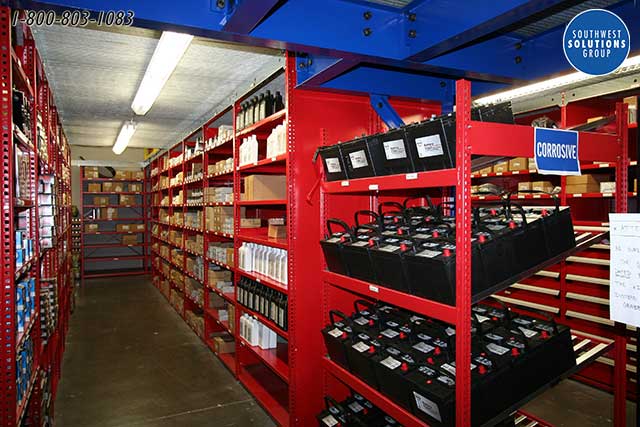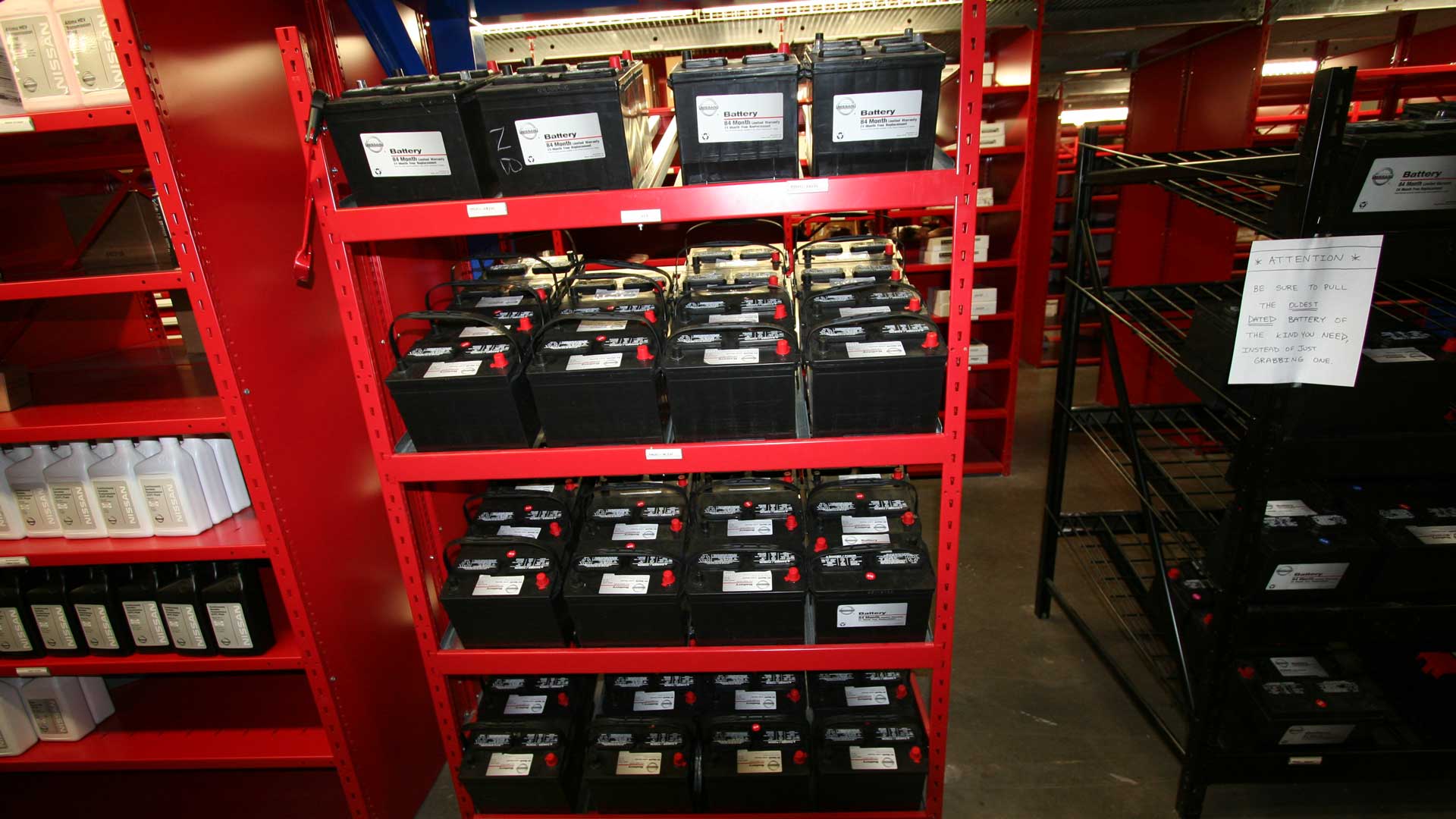How to Store a Car Battery
To store a car battery, first, clean it, then disconnect, place in a cool, dry area. Properly storing a car battery is essential to maintain its lifespan and performance.
By following specific steps, you can ensure the battery remains in good condition. Keeping the battery clean and disconnected is crucial. Storing it in a cool, dry place away from direct sunlight and extreme temperatures will prevent damage. Regularly checking the battery charge level and ensuring it is properly sealed are also important factors.
By taking these steps, you can preserve the quality of your car battery and extend its longevity, saving you time and money in the long run.

Credit: www.southwestsolutions.com
Choosing The Right Storage Location
Choosing the Right Storage Location for your car battery is crucial to ensure its longevity and performance. The right storage location can prevent damage caused by extreme temperatures and humidity. Let’s explore some key factors to consider when selecting the perfect storage spot for your car battery:
Garage Or Carport
Storing your car battery in a garage or carport provides protection from direct sunlight, rain, and snow. It shields the battery from harsh weather conditions, ultimately extending its lifespan. Ensure the storage area is well-ventilated to prevent the accumulation of harmful gases and fumes around the battery.
Temperature And Humidity Control
Maintaining optimal temperature and humidity levels is essential for preserving the integrity of the car battery. Extreme heat can accelerate the chemical reactions inside the battery, leading to a shortened lifespan. Similarly, high humidity levels can contribute to corrosion and damage. Therefore, storing the battery in a controlled environment, away from extreme temperatures and humidity, is highly recommended.
Preparing The Battery For Storage
Before storing your car battery, it’s crucial to clean and inspect it thoroughly to ensure it is in top condition. Dirt and grime can impact the battery’s performance, so gently wipe the exterior with a clean, damp cloth.
Properly disconnecting the battery is essential for safe storage. Start by removing the negative terminal, followed by the positive terminal. Ensure each terminal is securely isolated to prevent accidental connections.
Battery Maintenance During Storage
Proper battery maintenance during storage is essential to prevent damage. Here are some tips for storing a car battery: keep it clean and dry, store it in a cool location, disconnect the negative terminal, and recharge it every few months.
Periodic Charging
While storing a car battery, periodic charging is crucial to maintain its health and longevity.
Monitoring The Battery
Regularly monitoring the battery ensures it remains in good condition throughout the storage period.
Protecting The Battery From Damage
To store a car battery, it’s crucial to keep it in a cool, dry place away from direct sunlight and extreme temperatures. Make sure to periodically charge it and avoid storing it on a concrete floor to prevent discharge. Additionally, disconnect the negative terminal to prevent any potential drain on the battery.
Protecting the Battery from Damage Car batteries are essential for the smooth operation of our vehicles. To ensure their longevity and performance, it is crucial to protect them from damage. Here are some key considerations for protecting your car battery. Using Battery Trays or Boxes When storing a car battery, it is important to use battery trays or boxes to prevent any physical damage caused by shifting or vibration. These protective containers can help keep the battery securely in place, reducing the risk of damage from bumps and jolts during transportation or storage. Avoiding Extreme Temperatures Extreme temperatures can have a detrimental impact on the lifespan and performance of car batteries. Exposure to high heat can accelerate the battery’s chemical reactions, leading to faster degradation. On the other hand, extremely cold temperatures can reduce the battery’s capacity and make it harder to start your vehicle. Thus, it’s important to store the battery in a cool, dry place to avoid weather-related damage. With these protective measures in place, you can ensure that your car battery remains in optimal condition, ready to power your vehicle when needed.Tips For Long-term Storage
When it comes to storing your car battery for an extended period of time, taking the necessary precautions is crucial. Following these tips will help ensure that your battery remains in optimal condition and is ready to go when you need it. Remember, a well-preserved battery means a longer lifespan and reliable performance.
Removing The Battery
Before storing your car battery, it is important to remove it from the vehicle. This simple step can prevent any drain or damage to the battery while it is not in use. Follow these steps to safely remove your battery:
- Park your vehicle in a well-ventilated area and turn off the engine.
- Locate the battery under the hood of your car.
- Ensure you are wearing appropriate safety gear, such as gloves and safety glasses, to protect yourself during the process.
- Using a wrench or socket set, carefully disconnect the negative (black) cable from the battery terminal.
- Next, disconnect the positive (red) cable from the battery terminal.
- Once both cables are disconnected, gently lift the battery out of the vehicle.
- Place the battery in a clean and dry location, away from extreme temperatures and direct sunlight.
Reinstalling And Testing After Storage
When it’s time to reinstall your car battery after storage, it is crucial to take proper steps to ensure its functionality. Following these steps will help you reinstall and test your battery to ensure that it is ready for use:
- Clean the battery terminals using a wire brush or battery terminal cleaner to remove any corrosion or debris.
- Check the battery for any physical signs of damage or leakage. If you notice any issues, it is best to consult a professional before reinstalling.
- Align the battery with the battery tray and carefully lower it into place.
- Reconnect the positive (red) cable to the positive terminal, ensuring a secure connection.
- Do the same for the negative (black) cable, connecting it to the negative terminal.
- Once the connections are secure, start your vehicle and let it run for a few minutes to ensure the battery is charging properly.
- Monitor the battery’s performance over the next few days to ensure it is holding a charge and functioning correctly.
- If you experience any issues, it is advisable to consult a professional for further assistance.
By following these tips for long-term storage, you can ensure that your car battery remains in top condition and extends its lifespan. Remember to store the battery in a safe and appropriate environment, and take necessary precautions when reinstalling and testing it after storage.

Credit: www.southwestsolutions.com

Credit: www.autozone.com
Frequently Asked Questions Of How To Store A Car Battery
How Should You Store A Car Battery When Not In Use?
Store a car battery in a cool, dry place. Keep it fully charged and connected to a battery maintainer. Check the charge every few months. Clean the terminals before storage and avoid extreme temperatures.
Is It Ok To Store Car Battery In Garage?
Yes, it is okay to store a car battery in a garage. Keep it in a cool, dry place away from direct sunlight.
How Can I Save My Car Battery When Not In Use?
To save your car battery when not in use, consider disconnecting it or using a trickle charger. Park in a shaded area to minimize heat exposure and start the car periodically to keep the battery charged. Regular maintenance and checking for corrosion are essential.
How Do You Store A Car Battery In The House?
Store a car battery safely at home by following these steps: Keep it in a cool and dry place. Make sure it is fully charged before storage. Disconnect and clean the terminals. Consider using a battery maintainer. Regularly check for leaks or damage.
How Long Can You Store A Car Battery Without Use?
A car battery can be stored for 3 to 6 months without use before needing a recharge.
What Is The Best Way To Store A Car Battery?
The best way to store a car battery is to keep it in a cool, dry place, away from direct sunlight.
Can I Leave My Car Battery On A Concrete Floor?
It is safe to leave a car battery on a concrete floor as long as it is not exposed to extreme temperatures.
Conclusion
Proper storage of a car battery is essential to extend its lifespan. By following the tips provided in this blog post, you can ensure that your car battery remains in good condition. Remember to keep it clean, fully charged, and stored in a cool, dry place to prevent any damage.
Stay proactive and maintain your car battery for optimal performance.

